Key points:
- Frontend forms allow website visitors to submit content directly to your WordPress site without requiring admin access.
- Choose from user-friendly plugins like WPForms for simple needs, or use Advanced Custom Fields (ACF®) for custom content workflows and database integration.
- Protect your forms with security measures like CAPTCHA, maintain performance with regular testing, and optimize the user experience with clear error messages and mobile responsiveness.
Do you need to collect content from your website visitors without giving them access to WordPress admin? Whether it’s job applications, guest posts, or customer reviews, getting content from users to your WordPress site can be tricky.
Thankfully, that’s exactly what frontend forms are designed to solve. They create a simple bridge between your visitors and your website, letting people submit content right from your public pages. No admin access required, no security headaches, just straightforward content collection that works.
This guide breaks down your options for WordPress frontend forms. We’ll look at easy-to-use plugins for quick solutions and explore how Advanced Custom Fields (ACF®) can power up your forms when you need something more bespoke.
Popular form plugins for WordPress
Let’s look at some of the most reliable WordPress form plugins that can get you up and running quickly. Each one has its own strengths, so you can pick the one that best matches your needs and skill level.
| Plugin | Best for | Key features | Price point |
|---|---|---|---|
| Contact Form 7 | Basic contact forms. | • Simple setup. • Spam protection. • Custom HTML support. | Free. |
| WPForms | Beginners and small businesses. | • Drag-and-drop builder. • 1,800+ templates. • Email marketing integration. | Free version available. Premium plan starts at $49.50 per year. |
| Formidable Forms | Complex form needs. | • Advanced calculations. • Custom displays. • Conditional logic. | Free version available. Premium starts at $39.50. |
| JetFormBuilder | Visual design focus. | • Page builder integration. • Dynamic content. • Custom layouts. | Plans start at $49 per year. |
1. Contact Form 7
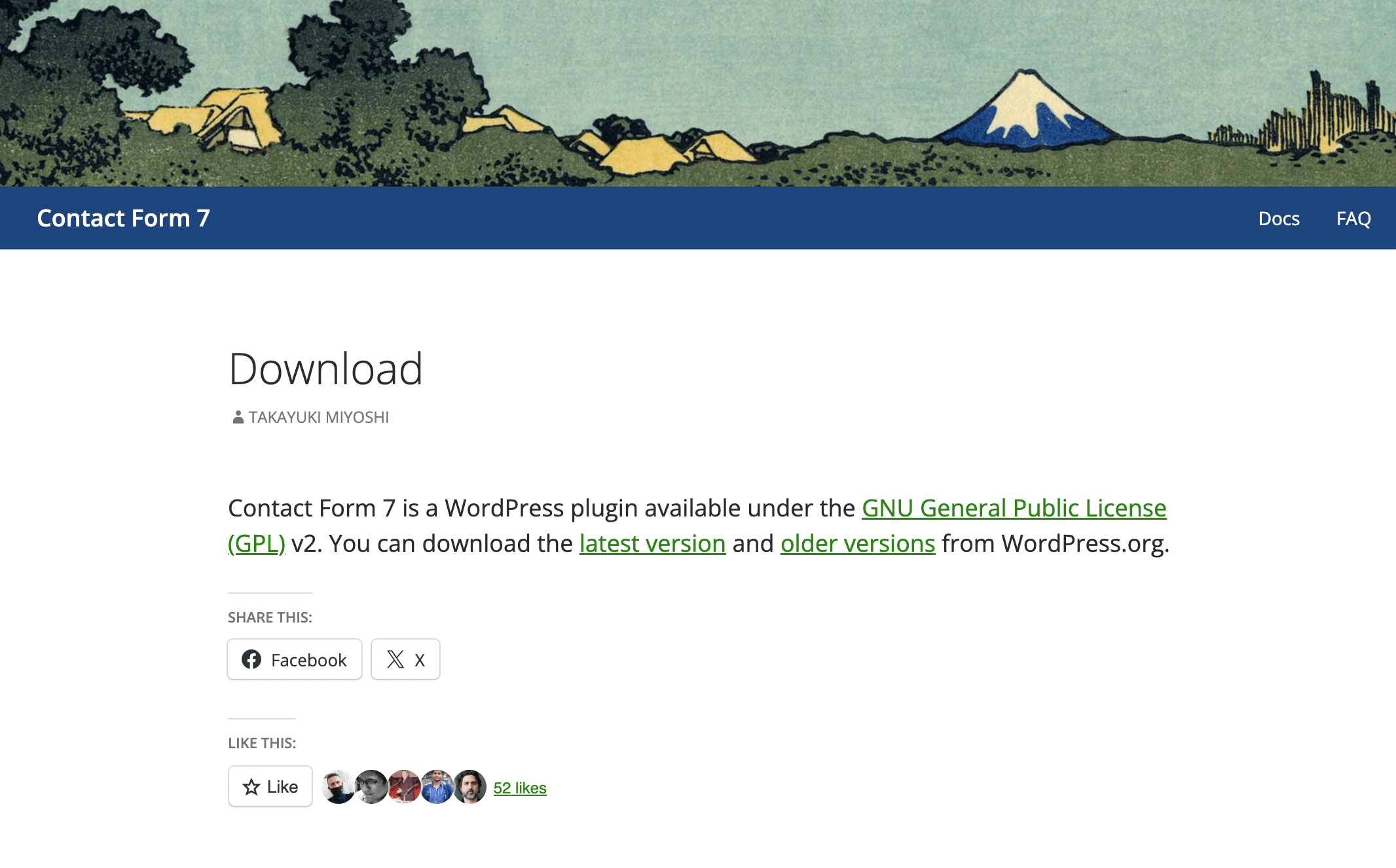
With over 10 million active installations, Contact Form 7 is one of the most popular form plugins for WordPress. It provides essential form functionality and integrates with various spam protection tools. While it requires basic HTML knowledge to customize, it’s a free and reliable option for standard contact forms.
2. WPForms
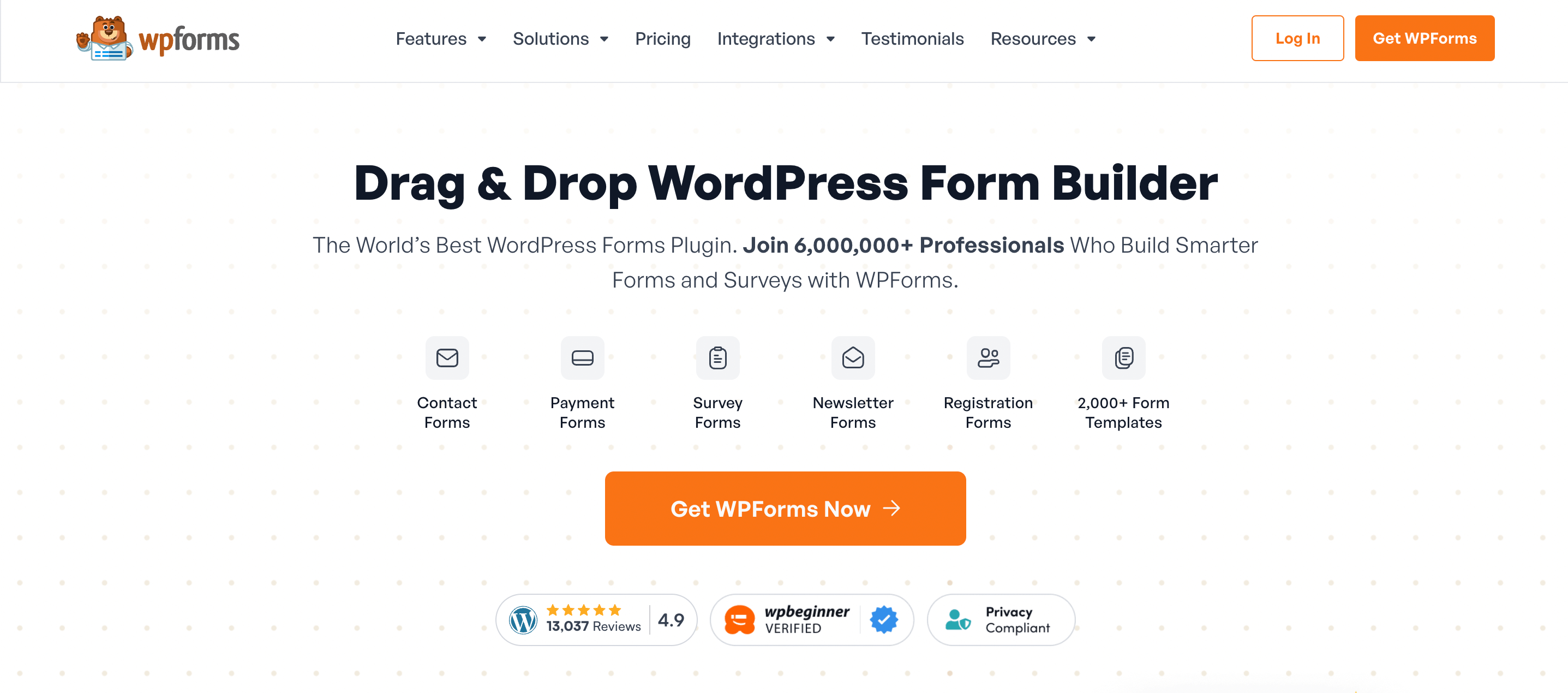
WPForms comes with a drag-and-drop builder that makes form creation straightforward. With over 1,800 templates ready to go, you can create everything from simple contact forms to complex survey systems in minutes.
The free version, called WPForms Lite, works great for basic needs, while premium plans (starting at $49.50 per year) unlock advanced features like payment forms and user registration.
3. Formidable Forms
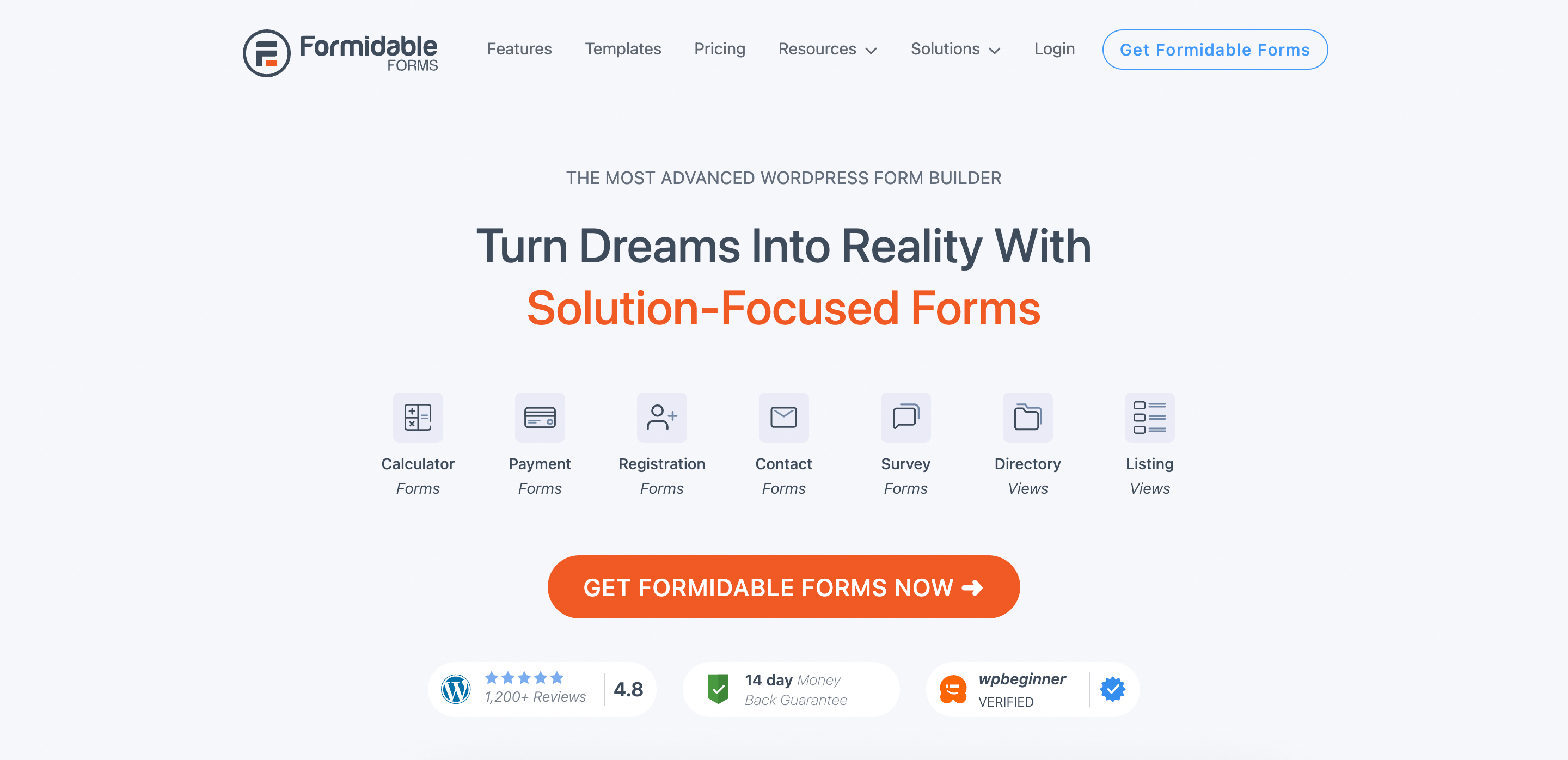
Formidable Forms specializes in advanced form creation, offering features like calculations, conditional logic, and custom data displays. It works well for complex form requirements and data management needs. Premium plans begin at $39.50 per year and include advanced functionality for specialized form applications.
4. JetFormBuilder
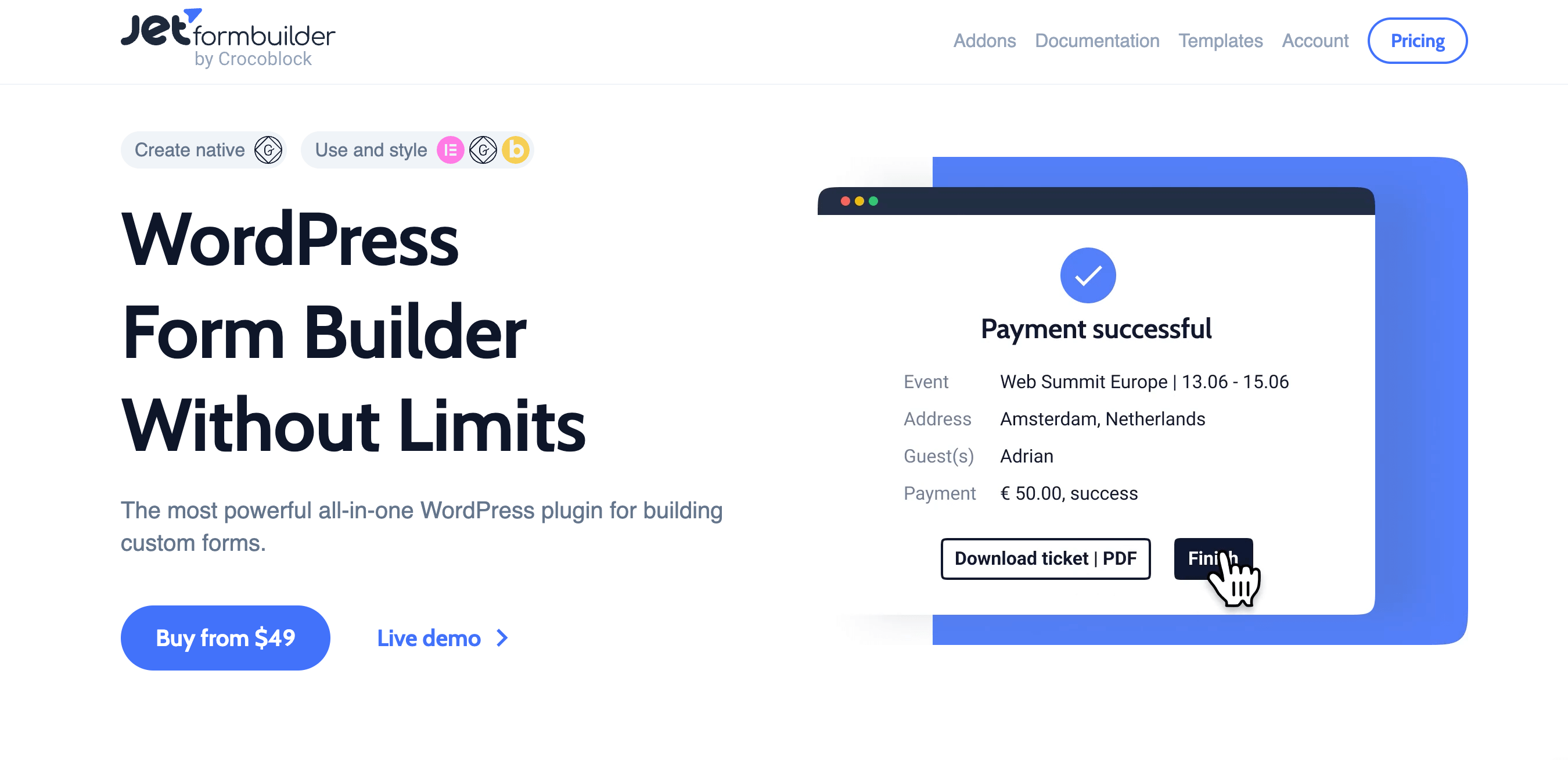
JetFormBuilder integrates with popular page builders and focuses on dynamic content handling. It’s particularly useful for creating forms that match your site’s design and managing user-submitted content effectively. Its pricing starts at $49 per year for one website.
Choosing the right plugin
Your perfect form plugin will depend on your budget, technical comfort level, and specific needs. Free options work well for basic forms, but premium plugins offer better support and advanced features. When choosing a plugin, consider both your current needs and your future growth plans.
While the plugins we’ve covered above handle most form needs effectively, some projects require deeper WordPress integration. If you need custom content workflows or advanced data handling, ACF offers a more powerful, code-driven approach. We’ll explore this in more detail next.
ACF: Frontend post creation and editing forms
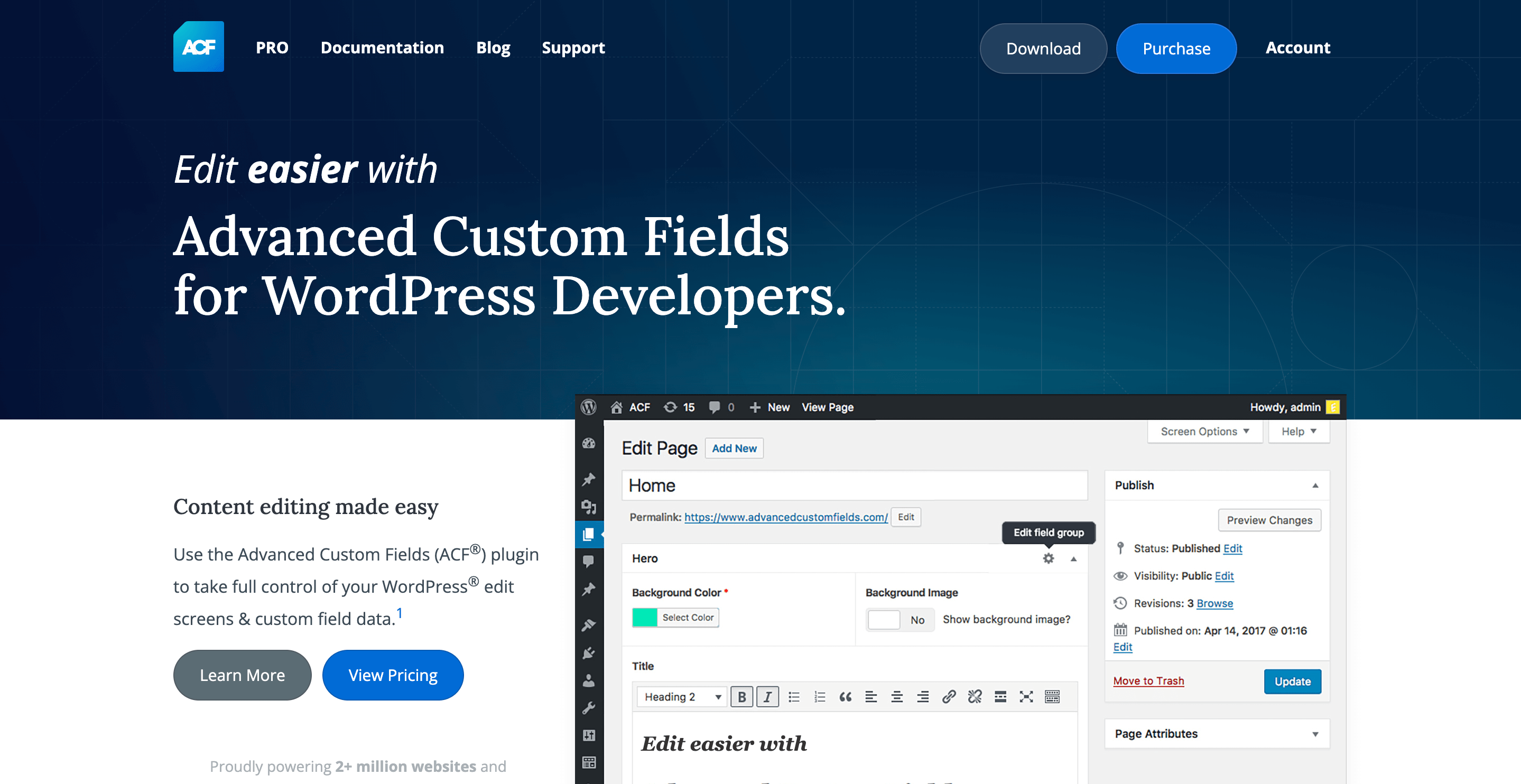
Although the primary use case of ACF is to let content editors add custom data to posts, pages, and custom post types in the backend of WordPress, ACF also lets your users add and edit actual WordPress posts right from the frontend of your site with its ACF forms feature. Here’s what makes ACF forms different: When someone submits content through an ACF form, it goes straight into your WordPress database as a proper post. This means you can display, organize, and manage submissions just like any other WordPress content, eliminating the need to sort through email notifications or manage separate form databases.
ACF forms are also great at handling structured content and custom post type entries, such as:
- Guest posts that fit right into your blog.
- Team member profiles that match your existing layout.
- Event submissions that integrate with your calendar.
- Portfolio items that maintain consistent formatting.
- Product listings that work with your catalog.
- Testimonials that display perfectly on your site.
Setting up ACF forms does require creating custom fields first, and you’ll need to write some code. However, this initial setup investment pays off with greatly expanded customization options and better WordPress integration. For developers and site builders who need precise control over how user-submitted content works with their WordPress site, ACF forms provide powerful, flexible solutions.
Supercharge Your Website With Premium Features Using ACF PRO
Speed up your workflow and unlock features to better develop websites using ACF Blocks and Options Pages, with the Flexible Content, Repeater, Clone, Gallery Fields & More.
How to create a frontend form with ACF
Frontend form implementation in ACF centers on two core functions: acf_form_head() for processing and acf_form() for rendering. Unlike traditional form plugins, ACF forms use your existing field configurations and post type relationships, making them ideal for complex content structures.
- Create a new template file or modify an existing one in your theme. At the very top, before any HTML output, add:
<?php acf_form_head(); ?>- Within your template’s content area, add the basic form structure:
<?php
acf_form(array(
'post_id' => 'new',
'field_groups' => array('group_xxxxx'),
'submit_value' => 'Submit Post'
));
?>- Configure your field group settings to match your post type’s data structure. This ensures that submitted content fits your site’s requirements and maintains consistency.
- Handle user access through WordPress roles to control who can submit and edit content. This helps maintain site security.
The acf_form() function offers extensive customization options, including:
- Creating new posts or editing existing ones.
- Selecting specific field groups to display.
- Customizing HTML elements and form structure.
- Setting up success redirects.
Displaying submitted content is straightforward. ACF integrates with WordPress’s template hierarchy, making your data immediately available through functions like:
<?php get_field('field_name'); ?>
<?php the_field('field_name'); ?>ACF handles security automatically through WordPress nonces and field validation. Just remember to set up proper user permissions through WordPress roles to control who can submit content.
This approach provides a professional, integrated solution for collecting and managing user-submitted content directly within WordPress.
Best practices for managing frontend forms
Creating forms is one thing, but keeping them running smoothly and securely is another challenge entirely. Here’s what you need to know about managing frontend forms effectively:
Security
Forms are like doors to your website – they need good locks. Adding CAPTCHA through Google reCAPTCHA or hCAPTCHA helps keep the bots out. When handling file uploads, set strict limits on file types and sizes to prevent server issues. Every piece of user input needs validation to protect against harmful code injection.
User experience
Think about forms from your users’ perspective. Keep them focused and break longer forms into steps if needed. Error messages should be helpful. Instead of “Invalid input,” try “Please enter a valid email address.” Make it crystal clear which fields are required, and ensure forms work well on phones and tablets.
Data management
Back up your form submissions regularly (automated cloud backups work great for this). Include a clear privacy policy and consent checkbox to keep things transparent, and store submissions with proper labeling and database structure. Set up email notifications so you never miss an important submission.
Maintenance
Test your forms frequently to catch any issues early. Keep plugins updated for security and performance. Watch for unusual spam patterns and track how users interact with your forms using tools like Google Analytics and Hotjar.
Performance
Fast-loading forms create better user experiences. Minimize HTTP requests by using lightweight scripts and compress any images you include in your forms. Ask only for essential information to keep things simple. Use efficient validation methods that check data without slowing things down. When possible, implement caching and use a CDN for static assets to reduce server load.
Enhancing user engagement with frontend forms
After exploring WordPress frontend forms, one thing becomes clear: There’s a solution for every need. Simple form plugins handle contact forms and surveys with ease, while ACF provides deeper integration for structured content.
The real power of ACF forms lies in how they work with WordPress. Every submission becomes part of your site’s content structure, organized and ready to use. Whether you’re collecting guest posts, team profiles, or event listings, ACF forms keep everything neatly integrated with your existing WordPress setup.
While ACF forms require more initial setup than standard form plugins, they offer unmatched control over content organization and management. This makes them invaluable for sites that need precise handling of user-submitted content.
Ready to enhance your WordPress site? Get started with ACF forms for that extra level of content integration.

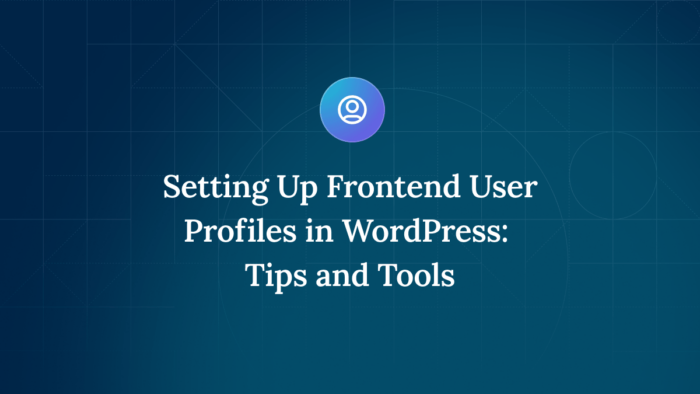
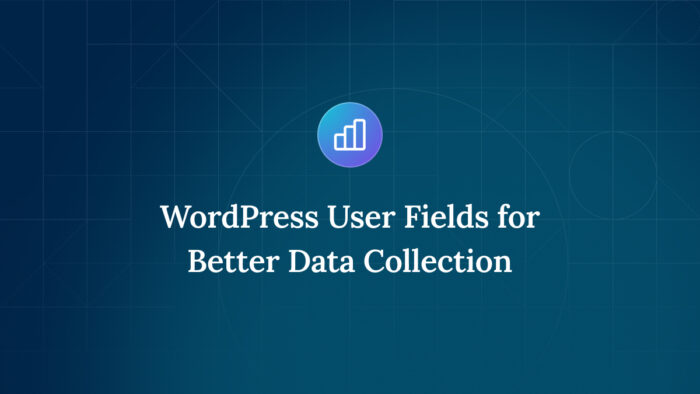
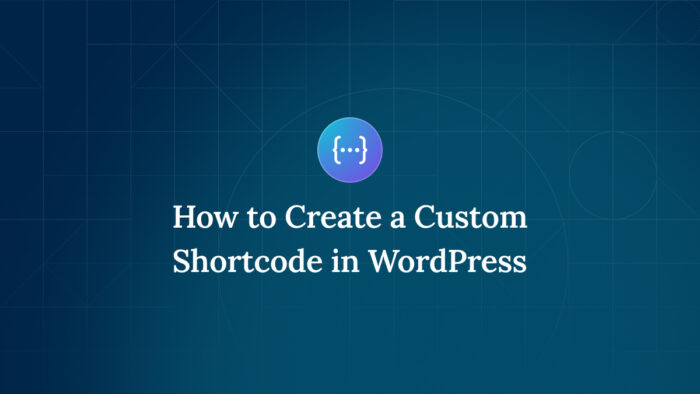

For plugin support, please contact our support team directly, as comments aren't actively monitored.